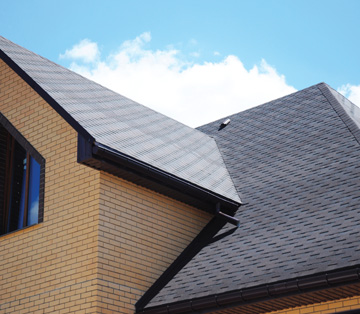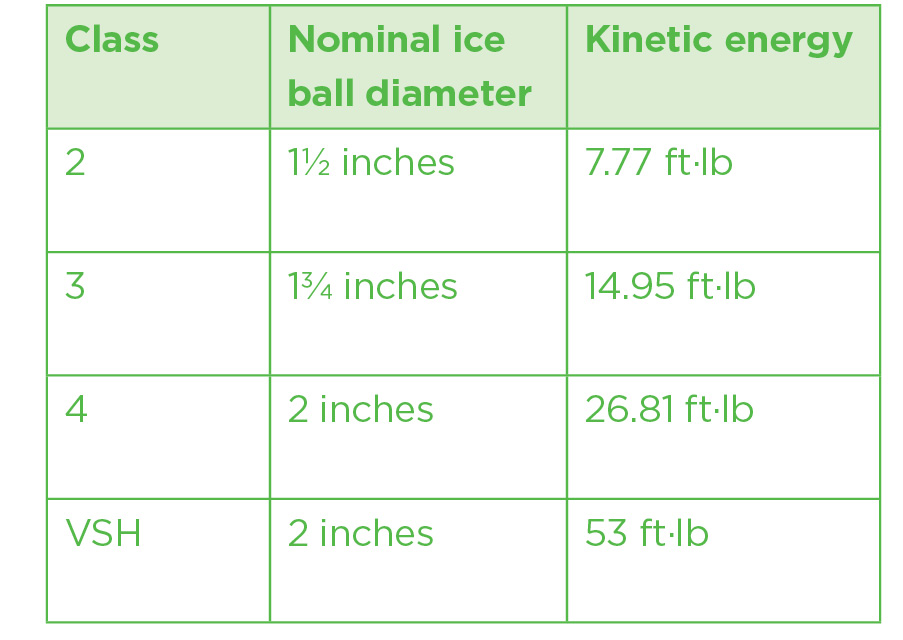 Roofing professionals look to and rely on FM Approvals for guidance, testing and certification approvals for fire- and wind-resistances of low-slope membrane roof systems. However, some are not aware of or overlook FM Approvals’ similar testing and certification approvals of steep-slope roof systems.
Roofing professionals look to and rely on FM Approvals for guidance, testing and certification approvals for fire- and wind-resistances of low-slope membrane roof systems. However, some are not aware of or overlook FM Approvals’ similar testing and certification approvals of steep-slope roof systems.
FM 4475
FM 4475, “Steep Slope Roof Covers,” provides testing and certification requirements for shingles or tiles. The standard defines steep-slope roofing as a roof with a slope of 2:12 or greater. Testing includes criteria for evaluating resistances to wind, exterior and interior fires, and impact (simulated hail).
Simulated wind-resistance testing is conducted using ASTM D3161, “Standard Test Method for Wind Resistance of Steep Slope Roofing Products (Fan-Induced Method).” A minimum of two test panels are required to resist a minimum wind speed of 110 mph. Then, test speed velocities can be increased in 10-mph increments, each for a duration of 10 minutes, up to 150 mph. FM 4475’s test capacity is higher than the maximum 110 mph prescribed in ASTM D3161.
For new construction applications, FM 4475 also requires testing according to ANSI/FM 4474, “Evaluating the Simulated Wind Uplift Resistance of Roof Assemblies Using Static Positive and/or Negative Differential Pressures.” This is the same test method FM Approvals uses for its approvals of low-slope membrane roof systems. The minimum tested resistance for approval of steep-slope roof coverings is Class 60. Test pressures can be increased by 15-pounds-per-square-foot increments to achieve higher classifications.
Simulated exterior fire spread testing is conducted using ASTM E108, “Standard Test Methods for Fire Tests of Roof Coverings.” This test includes spread of flame, intermittent flame spread and burning brand tests and results in Class A, B or C ratings. Two spread of flame, two intermittent flame spread and four burning brand tests are required. However, for noncombustible steep-slope roof decks, the intermittent flame spread and burning brand tests are not required.
Simulated interior (below the roof deck) fire spread testing is conducted using NFPA 276, “Standard Method of Fire Test for Determining the Heat Release Rate of Roofing Assemblies with Combustible Above-Deck Roofing Components.” Maximum fuel contribution rate measured in the test should not exceed 410 Btu/ft²/minute at three minutes, 390 Btu/ft²/minute at five minutes, 360 Btu/ft²/minute at 10 minutes and 285 Btu/ft²/minute at 30 minutes.
Simulated hail testing is conducted using ANSI/FM 4473, “American National Standard for Impact Resistance Testing of Rigid Roofing Materials by Impacting with Freezer Ice Balls.” ANSI/FM 4473’s Classes 2, 3 and 4 or VSH (very severe hail) classification apply. Nominal ice ball sizes and kinetic energies for each of these classifications are shown in the figure.
For FM 4475, ANSI/FM 4473’s Class 2 is the minimum requirement. Classes 3 and 4 are available as higher resistances. A minimum of two successful tests are required to qualify for a given classification.
Testing for the VSH classification is conducted using ANSI/FM 4473 with 2-inch-diameter ice balls and artificially weathering test specimens before testing. A minimum of three successful tests are required for the VSH classification.
FM 4475 also has specific labeling, a quality-assurance program and surveillance audit requirements. The purpose of the quality-assurance program and surveillance audit requirements are to ensure manufacturers’ equipment, procedures and product designs are consistent with what was tested and certified.
Using FM 4475
The advantage of using FM 4475 versus other single-attribute test methods is it addresses multiple attribute resistances for approval.

Steep-slope roof systems complying with FM 4475 are listed in FM Approval’s RoofNav application (roofnav.com). Currently, only four shingle roof systems from three manufacturers comply with FM 4475. The wind and impact resistances of each differ.
I expect roof system manufacturers will continue to add steep-slope roof systems to the FM 4475 listing in RoofNav.
Some steep-slope roof system manufacturers have tested their products using the ANSI/FM 4473 impact resistance test method and promote their products’ impact resistances based on that testing. In most instances, these products have been tested at test laboratories other than FM Approvals. This should not be confused with or interpreted as complying with FM Approvals’ FM 4475 approval classification.
MARK S. GRAHAM is NRCA’s vice president of technical services.
@MarkGrahamNRCA



